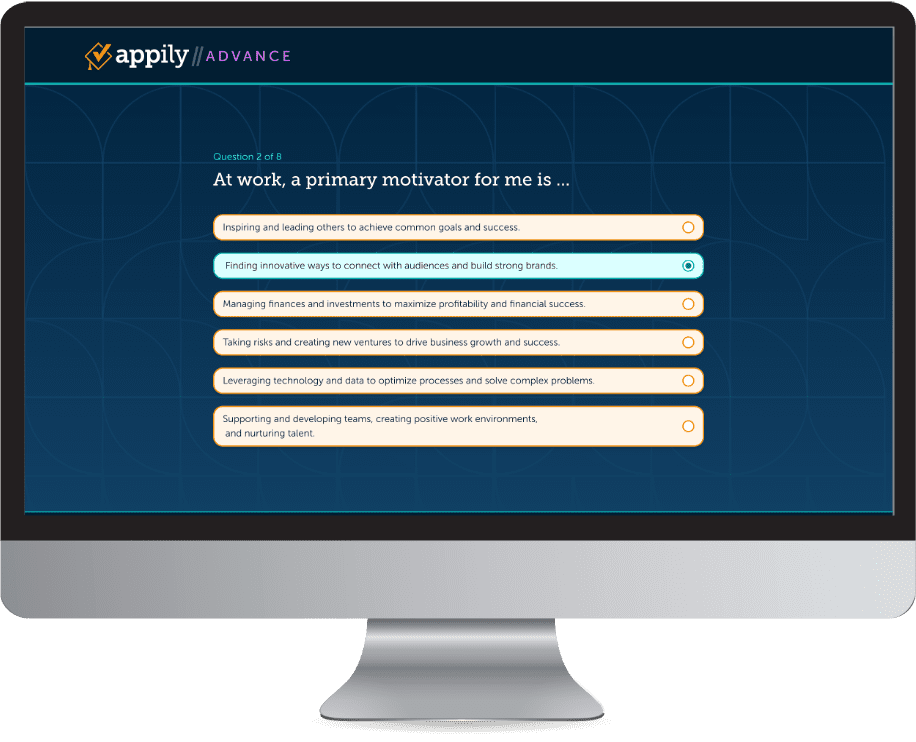Can gamification help you generate leads for healthcare programs?
How engaging interactive content led to 82% form fill conversion rates
March 6, 2024, By Emily Upton, Vice President, Program Marketing for ALR and General Manager, Agency Services
The last few years showed us just how valuable qualified healthcare workers are. But while enrollment leaders know it’s worthwhile to invest in programs for students to further their careers in this crucial field, it’s become exceptionally tough to find high-quality health sciences students to fill the seats in your cohorts.
Introducing gamification into your lead generation strategy could offer a promising new way to find students.
The struggle to find healthcare students
Before we get into gamification, let’s take a step back and look at why it’s so difficult to locate qualified healthcare students. Even as many healthcare programs have increased in popularity within the past few years, it remains difficult to find qualified healthcare students. There are limited lead sources, and many leads must be obtained in-person. While conferences, education fairs, and recruitment seminars can be effective in sourcing leads, it’s challenging to generate the number and variety of leads necessary to fill a class from these events alone. In addition, many hybrid and remote modality healthcare programs flooded the market during the pandemic, creating more options for students to choose from, but enrollments among healthcare programs have plateaued. And while international students continue to apply in large numbers, qualified domestic students remain challenging to find.
LEARN HOW TO SUCCESSFULLY LAUNCH AND EXPAND NURSING PROGRAMS
Knowing just how many challenges healthcare programs are facing, my team and I were eager to test out whether we could apply the concept of gamification to engage prospective leads for health sciences and nursing programs. And I’m excited to share that our pilot program with Appily Advance has generated some exciting initial results that provide insight into the impact gamification can have on lead generation.
-
What is gamification?
Gamification is a technique that uses elements from games, like quiz questions, point-earning, or competition, to encourage participation in a task. Gamification is used in marketing to engage potential customers using fun and interactive tactics.
Gamification is already popular in a variety of other fields, ranging from mobile app design to employee engagement programs. In learning design, it’s been tested with impressive results: one study found that 68% of students feel more motivated and engaged when participating in a course that uses gamified elements than one that doesn’t. Keeping that in mind, gamification can be a valuable tool to apply to the difficult task of finding and engaging prospective students.
How gamification benefits lead generation
Interactive content is a key element of gamification—it holds consumers’ attention and encourages them to actively engage with material. In our testing for Appily Advance for Healthcare Programs, we used a quiz format to capture students’ attention. Rather than simply providing a list of possible careers, the quiz engaged students in the process of discovering a program as well as what kind of healthcare role may be a good fit for them.

The quiz provided students with personalized results relevant to their own experiences and personality traits. Personalization is crucial in recruiting adult students, who are often balancing life with the college search process and want to receive relevant information. And outside research from McKinsey finds that nearly 80% of consumers are more likely to consider buying from a brand that uses personalization compared to ones that don’t.
-
82%
Form fill conversion rate from individuals who complete the Appily Advance for Healthcare Programs quiz.
-
40%
Lower cost per lead for Appily Advance for Healthcare generated leads compared to Facebook and Instagram direct acquisition.
Lastly, but perhaps most importantly, students’ experience on the microsite ended with a lead generation form encouraging students to enter their personal data to receive their quiz results. Given that 82% of the students who complete the initial Appily Advance for Healthcare Programs quiz experience go on to fill out the lead gen form, it’s clear the format is effective in capturing and holding student attention.
WHAT ARE THE 5 DON’TS OF DIGITAL LEAD GENERATION?
Using gamification in this way may engage students more quickly and effectively than other forms of lead generation, yielding a higher-quality lead while lowering acquisition cost. In fact, our quiz generated a 40% lower cost per lead compared to directly acquiring leads from Facebook and Instagram.
Gamification is a powerful tool, and one that EAB is excited to use to our advantage to effectively source high-quality students for our partners. As our Appily Advance for Healthcare Programs solution continues to evolve, I’m excited to share the results of this gamified approach with you.

More Blogs

Our New Staffing Model Playbook for Higher Ed CMOs

4 reasons your university should invest in a permanent process improvement team—and how to maximize its impact
